A reader asked about the Watt character from the original Paper Mario, which debuted on the Nintendo 64 in the early 2000s:
According to the manual, the official strategy guide, and some dialogue in the game, Watt is female. However, when you use a Super Block to power her up, it refers to her as male!
Similarly, in Super Paper Mario, you can get a special rare card with Watt on it that also calls her male! So my question is, what was she like in Japanese? Was she definitely female there, or more gender ambiguous, and the NoA translators decided to go with female? But mess up? And why does it come back in SPM?

First, in Paper Mario, Watt seems to be a baby sun or lightbulb that lights up dark areas and can use electric attacks.
In Japanese, this character’s name is “Akarin”, which is a play on words with akari (“light; illumination”) and akachan (“baby”). The rin at the end also lends a sense of cute youthfulness to Akarin’s name in Japanese.
Now, let’s get to the point of the reader’s question: what gender is this character?
Usually, gender in Japanese entertainment can be determined from basic speech patterns. In this situation, however, the character speaks in an extreme, baby-like way in Japanese, which obscures the usual context hints. In particular, Japanese “baby speech” tends to transform “s” and “sh” sounds into “ch” sounds, among other things. This pattern turns ordinary words like desu (“to be”) into dechu, to give one example.
With all of this in mind, I scoured the Japanese script to the best of my ability and couldn’t turn up anything 100% definitive about Akarin’s gender. This is partly due to the baby talk overshadowing everything else, and also because youthful characters in Japanese entertainment often use their own name instead of “I” or “me”.
Digging a little deeper, though, I was able to find that the official Japanese site has Akarin using atachi as a first-person pronoun. By itself this highly suggests that Akarin is female, especially given that atachi in baby-talk would equal “atashi” in normal-talk.
Indeed, Japanese fan sites and even the Japanese Wikipedia article writers seem to reach the same conclusion as I have – that the use of this atachi pronoun makes it most likely that Akarin is a girl.
For reference, the key text here says:
Because of the atachi first-person pronoun, Akarin is believed to be a girl.
So it’s not set in stone, but what few signs there are point to Akarin/Watt being a girl.
What’s the deal with Watt’s gender in translation though? For the Nintendo 64 version, there are a couple of things at play:
First, as the Japanese script doesn’t make Watt’s gender 100% clear, this might’ve tripped up the translators a bit. But given that the translators obviously had access to the creators and other internal resources, most of Paper Mario’s text DOES call Watt a girl:
However, someone on the translation team dropped the ball, as there’s non-main script text that instead refers to Watt as a he:
Then, when Super Paper Mario came out seven years later, those translators accidentally made a gender-related mistake too:
Here’s this Super Paper Mario text side-by-side:
| Japanese Version (basic translation) | English Translation |
| One of Mario’s allies that appeared in “Mario Story”. | This is Mario’s good buddy Watt from Paper Mario. |
| Very smart, despite being a baby. Was able to brightly light up the darkness. | This guy was pretty bright for his age! |
As we can see, the original Japanese text here made no mention of gender, but to make things flow more naturally, the English translators assigned a gender to Watt. I don’t know if they lacked old documentation for the character or if they just decided to take a 50-50 chance at whatever Watt’s gender was. But the end result was that Watt’s gender was put into further confusion for fans outside of Japan.
In short, all signs point to Akarin/Watt being female in the Japanese version of the games. The English versions sort of go back and forth between genders, most likely due to a lack of internal documentation and/or internal miscommunications among the translation teams.


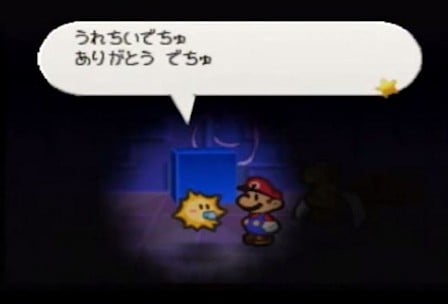





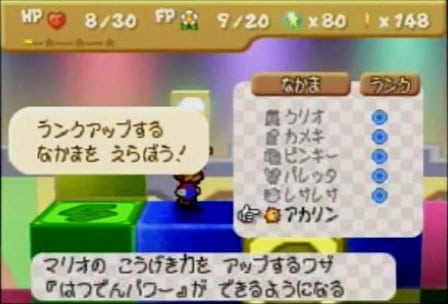

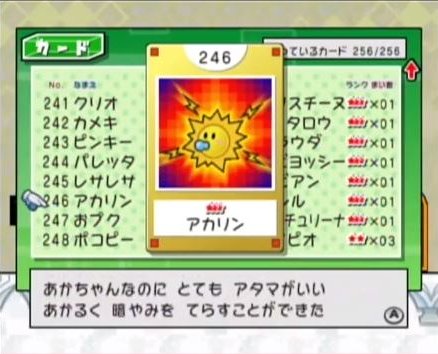
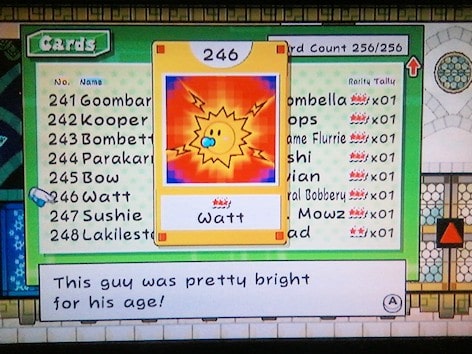
![Passport to MOTHER 2 [Learn Japanese!] Passport to MOTHER 2 [Learn Japanese!]](https://legendsoflocalization.com/wp-content/uploads/2018/05/pp-m2.jpg)


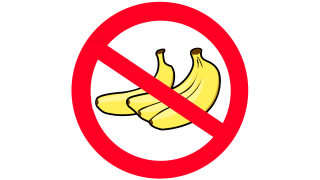
Speaking of Paper Mario, I was playing this game in Japanese a while back, and I noticed localizers changed the little song that plays when you get a new partner. There was no reason to. I know it doesn’t have anything to do language, but do you know anything about that?
Sorry for replying to this comment two and a half years too late, but I’m guessing they changed it because it sounds really similar to this song.
https://youtu.be/GB4lOWfgD5s?t=59
Wahoo! Thanks a bunch for tackling this!
Hmmm… I never knew the issue of Watt’s gender came down to something like an obscure pronoun, though! Then again, seems like that happens when translating from Japanese. 😛 Still, this solves something that’s been bugging me for more than a decade!
Randomly when looking up some random tenchu stuff (and finding out the Japanese and Western versions of the 2nd game are very different) my mind suddenly went to two different things and then my brain sorta collided them. “Mato could translate that string of characters in Tenchu 3”
Basically when you assassinate some guards in Tenchu: Wrath of Heaven (or Return from Darkness on the original Xbox) one of a collection of Japanese symbols above your health light up. When they’re all lit up in a level you learn a new skill and apparently your attacks do more damage.
I guess what I wanna ask is can you share what the string of text in this screenshot says?
http://static.giantbomb.com/uploads/original/3/34651/1152298-onikage.jpg
Not to disappoint you, but it means Rin, Pyo, To, Sha, Kai, Jin, Retsu, Zai, Zen.
http://www.youtube.com/watch?v=9lCpKb2yeOc
http://en.wikipedia.org/wiki/Kuji-in
The Kuji-in also appear in the Ninja’s class’s Mystic Arte, Fuuma Kuinken, in Tales of the World Radiant Mythology.
Probably doesn’t help the translators that Watt isn’t a particularly feminine name…
I remember playing through all three Paper Mario games for the first time in a row after the N64 one was released on Wii VC. And I remember finding Watt’s caught card in SPM and I still remember getting annoyed that it wasn’t correct. I still find it annoying that they couldn’t have kept it consistent, especially seeing as how amazingly Nintendo have kept up with most other Mario localisation changes (except for the NokNok shells in Mario RPG, but never mind about that).
I just downloaded some Pikmin 3 DLC where you can rescue Louie and use him as a teammate, which wasn’t possible before the DLC. So they had to add new dialogue for Louie for when he’s getting hurt / his Pikmin are dying etc. And in one of those small bits of text, they spelled Louie and “Louis”… Inconsistent stuff like this just annoys me, I guess. Ohhh well. 🙁
I wasn’t gonna get that Pikmin 3 DLC, but I was hoping I could use Louie when he turned up in the main game. I was disappointed when he didn’t. Nintendo has redeemed itself! Now if only they could let me stop dismissing my pikmin whenever I shake the gamepad… I’ve lost tons of Pikmin by doing that by accident. If they could fix that, Pikmin 3 would be perfect… Heh. Now it’ll never happen, right? xD
I find that the game controls too sloppily with the Gamepad. It’s definitely not as precise as the controls in the two GameCube games. However, using Wiimote and Nunchuck with Pikmin 3 makes executing the correct commands sooo much easier. It’s still a shake of the Nunchuck to dismiss your team, but it doesn’t happen accidentally as often as shaking the Gamepad, I feel. Give it a try!
One other interesting thing in Pikmin 3 is that the same WiiMotionPlus technology from Skyward Sword is used to make the cursor more accurate, but instead of re-aligning manually with up on the D-pad, it just uses the sensor bar to readjust automatically, so you don’t even notice it in the first place. 😛
In my mind, watt was always a girl. I always thought the blue binky thing was her nose, though, and never realized she was supposed to be a baby.
By the way, if Vivian is not actually a girl, a huge part of my childhood is about to be ruined. NOW post your article, Mato. xD
Heh, and in turn, if Vivian is not actually a boy, I’d be disappointed! I love the idea of Vivian being a feminine-looking bishounen and the text seemed to imply that.
I’m looking forward to your article on Vivian… I just hope you do some research on gender esp transgender politics as well, because a lot of well-meaning articles about Vivian trip up by accidentally using incorrect and at times offensive (offensive out of ignorance, not on purpose offensive) terminology.
I’d be interested in details along these lines, if you are up for it.
Haha, this is definitely one of my “pet” games, so I would love to see more articles on it. Also, I’d personally recommend you play the game in English just for the localized script; NOA Treehouse did great things with this game, and bits of it still kind of make me laugh today (albeit for decidedly nostalgic reasons). I should probably play it in Japanese sometime for nerd cre- er, fun. FUN.
Are you still working on the vivian article, or is it currently on the backburner?
I would like to know.
It’s still in the in-progress phase, but admittedly I haven’t done much on it in the last few weeks.
Still looking forward to this!
I’m pretty sure Watt is supposed those spark enemies that are in the castle levels in Super Mario World, just to let you know.
i always thought the joke was that she was a young angry sun
It’s a shame the Vivian article doesn’t seem to have surfaced, but I wouldn’t blame you for wanting to avoid what seems to be quite a touchy subject. That, and I figure it would take quite a bit of work to dig out and translate all the important text. Hope we see it at some point though, at least to get a professional opinion on it.
I kind of wonder if something similar happened to Hooktail in Thousand-Year Door. I mean, in-universe, I pretty much chalk it up to her brother knowing a lot better if she’s a boy or girl than some guide writer who probably just wanted to collect battle-essential information and get out of there, and made an assumption for the sake of not being eaten for asking. But in the real world… maybe, maybe not.
Hooktail, gloomtail and bonetail are ALL female in the japanese version.
The genders for the sun and moon depend on the language.
In German it’ die Sonne, der Mund.
In Soanish it’s el sol, la luna.
Um… Sorry if this is kinda bad or anything… I, uh, I’m interested in the Vivian article… It’s now 2018, and sure this is the first time I’ve looked at anything with legends of localization, but I’ve heard a lot of good about it… Anyways I know it might still be in progress but I’m dying to know more about Vivian… Thank you and sorry if this wasted time.
Doesn’t look like it was ever written, which is unfortunate. Maybe one day. But it’s been almost a decade since it was supposed to have been written….
If you don’t already know, the summary is that Vivian is female, but in the Japanese version, she’s a transgender female, which is why her sisters pick on her. But in English, they decided to skip that and just make her cisgender.
Who else I think would be fun to see an article on is Birdo! Birdo is also trans, and in her first appearance, the booklet that mentions her says that she’s a boy who thinks she’s a girl, and she prefers to be called Birdetta. Later games and other material generally just refer to her as Birdo and she, however. Except for one small game called Captain Rainbow, if I remember right, where Birdo got imprisoned for using the girl’s bathroom. And you have to find some sort of evidence that she’s a girl, I believe, so she can be released.
There is also Toad. All toads are actually genderless. They just sometimes identify with genders, like Toadette.